Related Research Articles

Peter Joseph Andrew Hammill is an English musician and recording artist. He was a founder member of the progressive rock band Van der Graaf Generator. Best known as a singer-songwriter, he also plays guitar and piano and produces his own recordings and occasionally those of other artists. In 2012, he was recognised with the Visionary award at the first Progressive Music Awards.

David Nicholas George Jackson, nicknamed Jaxon, is an English progressive rock saxophonist, flautist, and composer. He is best known for his work with the band Van der Graaf Generator and his work in Music and Disability. He has also worked with Peter Gabriel, Keith Tippett, Osanna, Judge Smith, David Cross and others.

Guy Randolph Evans is an English drummer and percussionist. He is best known as a member of the progressive rock band Van der Graaf Generator, appearing on each of their studio albums. He is also a member of Echo City and Subterraneans.

Pawn Hearts is the fourth album by English progressive rock band Van der Graaf Generator, released in October 1971 on Charisma Records. The original album features just three tracks, including the side-long suite "A Plague of Lighthouse Keepers". The album was not commercially successful in the UK, but reached number one in Italy. It has since seen retrospective critical praise and was reissued on CD in 2005 with extra material.
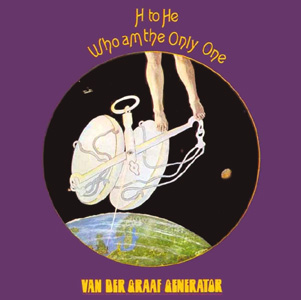
H to He, Who Am the Only One is the third album by the British progressive rock band Van der Graaf Generator. It was released in 1970 on Charisma Records.
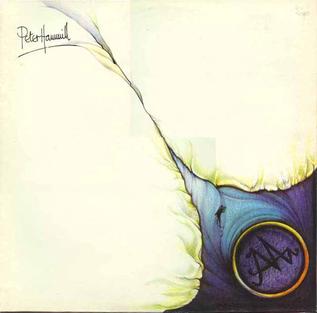
The Silent Corner and the Empty Stage is the third album by British singer-songwriter Peter Hammill. It was released on Charisma Records in 1974, during a hiatus in the activities of Hammill's progressive rock band Van der Graaf Generator. Other ex-members of Van der Graaf Generator also perform on the recording.

The Least We Can Do Is Wave to Each Other is the second album by the British progressive rock band Van der Graaf Generator, released in February 1970 on Charisma Records. It was the group's first album to be released in the UK and the only one to chart in the top 50 in that country.
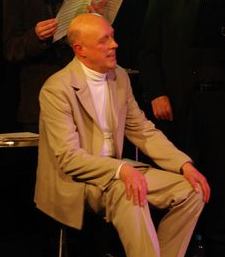
Christopher John Judge Smith, is an English songwriter, author, composer and performer, and a founder member of progressive rock band Van der Graaf Generator. Initially working under the name Chris Judge Smith, he has been known simply as Judge Smith since 1994. After Van der Graaf Generator, he has written songs, stage musicals and operas, and from the early 1990s on he has released a number of solo CDs, including three "Songstories".

Tony Stratton Smith was an English rock music manager, and entrepreneur. He founded the London-based record label Charisma Records in 1969 and managed rock groups such as the Nice, Van der Graaf Generator and Genesis.

The Quiet Zone/The Pleasure Dome is the eighth album by British progressive rock band Van der Graaf Generator. Released in 1977, it was their last studio album before their 2005 reunion. The album features a more energetic, new wave sound than its three immediate predecessors, anticipating singer and songwriter Peter Hammill's late 1970s solo work.

Hugh Robert Banton is a British musician and electronic organ builder, most widely known for playing organ and keyboards with the group Van der Graaf Generator.

The Aerosol Grey Machine is the debut studio album by English progressive rock band Van der Graaf Generator. It was first released in the United States in 1969 by Mercury Records.
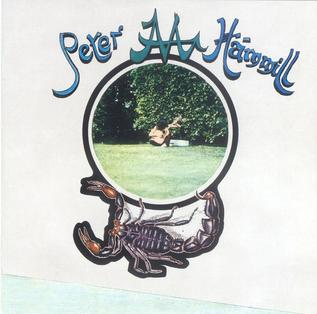
Chameleon in the Shadow of the Night is the second solo album by British singer-songwriter Peter Hammill. It followed in the aftermath of the breakup of Hammill's band Van der Graaf Generator, and other ex-members of Van der Graaf Generator perform on the album.

Van der Graaf Generator are an English progressive rock band, formed in 1967 in Manchester by singer-songwriters Peter Hammill and Chris Judge Smith and the first act signed by Charisma Records. They did not experience much commercial success in the UK, but became popular in Italy during the 1970s. In 2005 the band reformed, and are still musically active with a line-up of Hammill, organist Hugh Banton and drummer Guy Evans.
Keith Ian Ellis, was an English bass player. He was born in Matlock, Derbyshire. He is known for his associations with The Koobas, The Misunderstood and Juicy Lucy. He was also a member of Van der Graaf Generator from 1968 to 1969. Ellis worked with Mike Patto and Ollie Halsall's band Boxer from 1975 until late 1976 when the original line-up split.
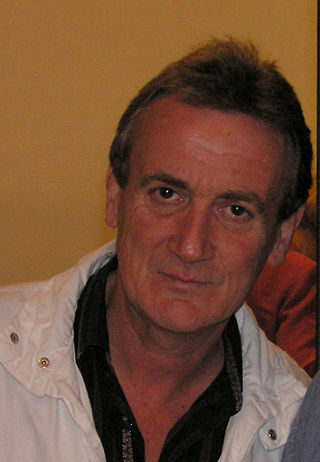
Nic Potter was a British bassist, composer and painter, best known for his work with the group Van der Graaf Generator in the 1970s.
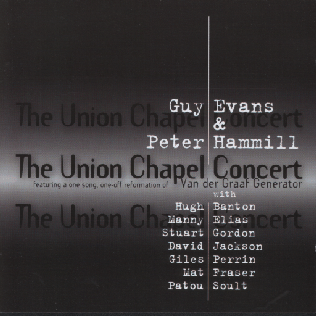
The Union Chapel Concert is a live album by Guy Evans and Peter Hammill, recorded in the Union Chapel in London, 3 November 1996, and released as a double CD in March 1997. The album is noteworthy because it is the first time the four ex-members of Van der Graaf Generator, Hammill, Evans, Hugh Banton and David Jackson, played together in front of a paying audience since the band had broken up in 1978. The subtitle on the front of the album reads: "featuring a one song, one-off reformation of Van der Graaf Generator." David Jackson and Hugh Banton were unannounced guests and played a Soundbeam-medley and a Samuel Barber Adagio for strings on the church organ respectively. All songs that evening were played in varying line-ups. Only "Lemmings" was played by Hammill, Evans, Banton and Jackson.
John Anthony is an English music producer. He has worked with Van der Graaf Generator, Genesis, Queen, Roxy Music and Peter Hammill.
"A Plague of Lighthouse Keepers" is a song by the English rock band Van der Graaf Generator, from their fourth album Pawn Hearts (1971). It is a concept piece over 23 minutes long, which comprises the whole B-side of the album. "A Plague of Lighthouse Keepers" evolved in the studio, recorded in small sections and pieced together during mixing. The song has many changes in time signature and key signature, and even incorporates some musique concrète.
Theme One is a 1967 instrumental piece by George Martin used from 1967 to the mid 1970s as the opening and closing theme tune for BBC Radio 1 and BBC Radio 2. Theme One was first played on Radio 2, immediately before Radio 1 began broadcasting independently, on the launch day of both stations, 30 September 1967.
References
- ↑ "Stay Friends". StayFriends GmbH. Archived from the original on February 10, 2013. Retrieved October 8, 2008.
- ↑ Seven Up. Ash Ra Tempel discography, retrieved 24 September 2008.
- ↑ "Gedanken". Ash Ra Tempel discography, retrieved 24 September 2008
- ↑ Christopulos, Jim; Phil Smart (2005). Van der Graaf Generator The Book. Phil and Jim. p. 165. ISBN 0-9551337-0-X.
- ↑ Christopulos, Jim; Phil Smart (2005). Van der Graaf Generator The Book. Phil and Jim. p. 181. ISBN 0-9551337-0-X.
- ↑ "Japan Festival Berlin 2005" (PDF). Scantinental Business-Kontakt-Agentur Wagner & Partner GbR. Archived from the original (PDF) on July 16, 2011. Retrieved October 14, 2008.
- ↑ "Kawaraban - Juni 2004". Deutsch-Japanische Gesellschaft Berlin. Deutsch-Japanische Gesellschaft Berlin e.V. Retrieved October 14, 2008.
- ↑ "MySpace.com - Voice - 61 - Weiblich - Berlin". MySpace.com. Retrieved October 14, 2008.